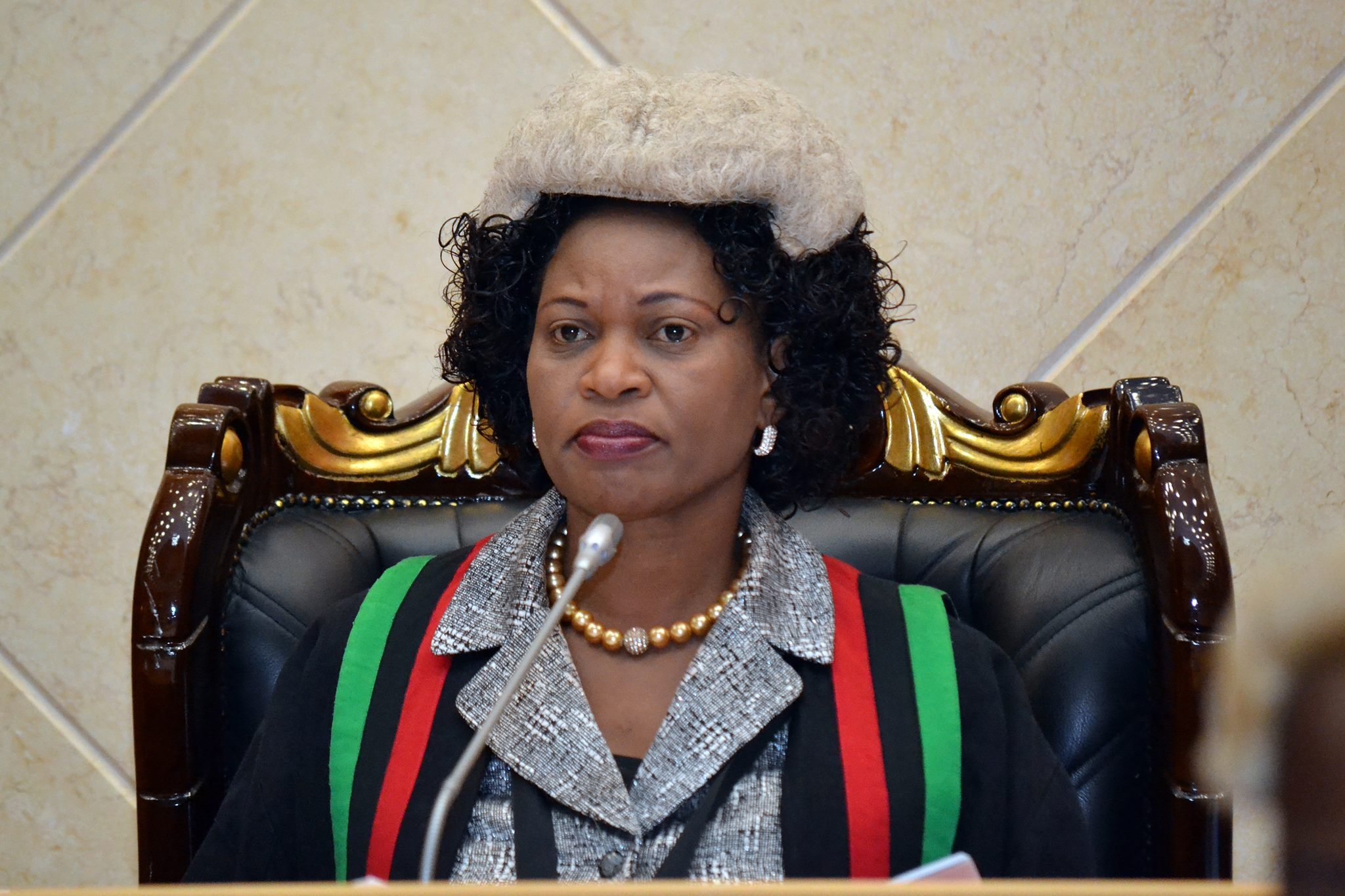Malawi Medical Journal; 22(4): 101-103 December 2010
Anthony P. Sefasi
Catholic University of Malawi
Abstract
HIV may affect the elderly in a number of ways. They may become
infected themselves; their children may suffer prolonged illness
and incapacity, and need the elderly to look after them; the same
children may then die from the illness, leaving the elderly without
the support of the next generation; this bereavement also leaves
the older people to meet funeral costs and then to take care of
orphans left behind. HIV has impacts on old people in ways that
are social , economic, psychological and physical in nature.
Aims
We wanted to understand the socio-economic impacts of HIV/
AIDS on lives of older people following the death of their
productive children, and to examine how the elderly struggle to
take care of HIV/AIDS orphans. While it is generally appreciated
that older people undergo such hardships, little research has been
done in Malawi to unravel the magnitude of these problems. We
hope that our findings will increase awareness and lead to more
being done to alleviate the problems faced by older people as a
result of HIV/AIDS.
Results
The results reveal that older people have no alternative but to
provide care and support to their ill children, and following the
death of their children to become parents again in taking care of
the orphaned grandchildren. This is a particularly big challenge in
a country like Malawi, dependent on hand-hoeing for subsistence
agriculture, where food production requires people who are
physically strong. 79% of older people taking care of HIV/AIDS
patients or orphans were found to have limited or no information
about HIV/AIDS. 31% were dependent on relatives for support,
while 69% sustained themselves through piece work, small business
or farming.
Conclusion
Elderly people need more resources and assistance to enable them
to fulfil their vital role in caring for HIV-AIDS orphans. They
are also in critical need of more information about HIV-AIDS,
as many are sexually active with multiple partners, and preventive
information is currently not reaching this important section of the
community.
Introduction.
According to the World Health Organisation and the United
Nations AIDS Programme. 34.4 million people were living
with HIV/AIDS as of the end of 2008 and AIDS had
resulted in more than 25 million deaths since the first clinical
evidence was reported in 19811.
The high incidence of HIV/AIDS in the sub-Saharan
African region is leading to a devastation of individual and
family life. Studies in Eastern and Southern Africa indicate
that women and children are AIDS’ greatest victims2.
In Malawi according to a Ministry of Health 2007 report,
about 970,000 people are living with HIV, with new infections
estimated at 90,000 per annum. These figures pose an
enormous challenge in terms of care for people who will
soon develop AIDS, some of whom will die leaving orphans
in need of support3.
Throughout sub-Saharan Africa, older people – particularly
older women – are a key resource for combating AIDS and
alleviating its impact3. At household level, they are the persons
who provide daily care for both AIDS patients and children
left orphaned by the pandemic. These older people have
taken on new roles by providing care and financial support
to orphaned children, playing child-rearing roles within their
extended families and continuing their more traditional roles
as advisors to their adult children and grandchildren. They
largely absorb the enormous additional burdens placed on
families and society by the AIDS pandemic.
According to a study in Zambia(1996) 57% of primary care
givers were grandparents. Of these, 37% were between
60 and 85 years of age. This ‘skip-generation parenting’
accounted for 45% of the cases in another study of 1996 in
Zimbabwe. According to Kadzandira (2007) in countries that
have a high prevalence of HIV and AIDS such as Malawi,
older people are increasingly playing the principal role of
caring for younger adults sick with HIV and AIDS and for
orphaned grandchildren4.
The World Health Organisation (2002) reported that 30%
of all households in sub-Saharan Africa were headed by an
older person. In Namibia, South Africa and Zimbabwe,
60% of orphans live with their grandparents. Up to 56% of
carers for orphans and vulnerable children in Namibia are
more than 60 years old5.
In terms of older people themselves being infected with
HIV, UNAIDS (2005) reported that 2.8 million adults
aged 50 years and older were living with HIV worldwide,
representing 7% of all cases.
Since there have been few studies of this kind in Malawi, we
investigated whether older people in Malawi – who account
for 6% of the general population – are undergoing similar
challenges in this era of HIV and AIDS.
Objectives
The main objective of the study was to establish the impact
of HIV/AIDS on older people in Malawi using Chiradzulu
district in southern Malawi as a case study.
Methods.
Design
We used both qualitative and quantitative approaches.
Using in-depth interviews and focus group discussions, we
collected data from 116 older people who were found to be
taking care of HIV and AIDS orphans. We conducted the
study between January and April 2010.
Questions and discussions during data collection centred on
personal information, numbers of children, possible causes
of death of the orphaned children’s parents, the burden of
care being undertaken, and mechanisms used to cope with
this.
Study population and Site
This study was conducted in Chiradzulu district in the
Southern part of Malawi, a district with a high HIV/AIDS
prevalence. The age criterion for inclusion in the study was
60 years. (For individuals who did not know their age, we
Impact of HIV on the eldery
estimated it using major historic events – eg ‘At what stage in
your life did Dr. Kamuzu Banda first return to Malawi?’)
The Group Village Headman and a child protection worker
identified households where an older person was taking
care of a terminally Ill HIV/AIDS patient or taking care
of HIV/AIDS orphaned grandchildren. Once we knew the
number of older people for possible inclusion per village
we employed a simple random sampling technique to come
up with our sample. Once an individual had consented to
participate, s/he was interviewed using a questionnaire.
Another sample was identified for focus group discussion,
with 12 participants being drawn from different villages in
the district.
Results
Roles played by older people in caring for a sick
relative from within the household
40% of the respondents had been guardians of a sick child
or grandchild; while 38% reported having been providing
financial and other support to the sick relative. 22% were
recorded to have been providing palliative care and spiritual
counselling to the patient prior to their death.
Challenges faced by older people taking care of
orphans.
59% of the sample reported that they had difficulty sourcing
money for orphan grandchildren’s school uniform, for food
and for meeting hospital bills in case of illness. 22% of the
sample indicated that taking care of orphaned grandchildren
halted their own development because they were forced to
be at home looking after the sick grandchild or taking the
child to hospital. They particularly stressed that they had
to spend their reserved resources to make the lives of their
grandchildren better, while impoverishing themselves in the
process. 19% of the respondents indicated that while they
were able to support their orphaned grandchildren now,
they were worried about what will happen to these children
following their death; as to who will support the children,
who will look after them when they are sick, and who will
remind them to take their anti-retroviral treatment without
fail every day.
Challenges faced during illness and death of a family
member.
43% of the respondents reported spending all the money
they had on medication (which included both western and
traditional) and on buying food. 44% of the respondents
indicated having sold property to get money for meeting
expenses both for medication and for the funeral ceremony.
12.5% indicated losing direct support from the deceased
(who had been working and supporting them, financially and
otherwise, before their illness made this impossible).
Economic impact of HIV and AIDS on the Aged
55% of the enrolled elderly people were affected through
death and sickness of their children who gave them support
and care. One grandmother commented; “All the money had
been used to care for my children. They all died and now I have the responsibility
to look after the grandchildren.” There was regret that
an economically productive person had been lost by the
household. Generally, the longer the illness dragged on, the
more resources were depleted. For example one old lady
recounted her ordeal as follows; “I cared for my daughter who
suffered for three years at home. All the resources which she had were
exhausted, and I started using my own resources thinking that she will
get better.” An old Lady of 77 years from Masikini Village
lamented, “The illness and eventual death of my son exhausted all
our financial resources and now I do not have anybody to ask for help
and support.”
Factors that put older people at risk of getting
infected with HIV.
56% of the respondents felt that lack of knowledge on HIV/
AIDS speeds up the infection rate among their age group,
as most of the times preventive messages target the youth
and not older people. One old lady explained that following
the death of a young person, “we are asked to wash the dead
body; most of the times we do not know the cause of death, hence we
wash the body without gloves. This puts our lives at risk.” 12.5%
believed that taking care of a sick relative with HIV/AIDS
without protection at home put them at risk of the infection.
Respondents reported that having multiple sexual partners is
common among older people.
Discussion
Old people face a lot of challenges because of the HIV/
AIDS pandemic. HIV/AIDS is wiping out productive children,
and grandparents must assume responsibility for the
orphaned grandchildren, without sufficient resources, and
often without sufficient strength, to do so. These findings
are consistent with studies worldwide from areas hardest hit
by HIV/AIDS pandemic.
HIV/AIDS messages have not been reaching older people5.
There is a great misconception that when people grow old
they become sexually inactive. Our study established that in
fact older people do commonly have multiple sexual partners,
which is why we need to include them in our preventive
messages on HIV/AIDS.
In a country like Malawi where there are no social pensions
for older people, the HIV/AIDS impact is particularly
intense. Some older people, as established by this study,
have no alternative but to be beggars in an effort to make
ends meet.
Conclusion
The impact of HIV/AIDS on older people in Malawi is
diverse and deep. Social support networks are disrupted, and
older people are left impoverished. Meanwhile they are also
at risk of becoming infected themselves because preventive
information on HIV/AIDS is not reaching them.
Recommendation
Diverse stakeholders should take an active role in alleviating
the burdens being carried by older people in Malawi as a
consequence of HIV/AIDS. Access to subsidized fertilizer
and other amenities should not be age-based, as this leaves
out older people who are taking care of orphans. Messages
about the disease and its prevention strategies should not
be limited to people in the reproductive age groups only,
as is the case currently10. There is need for more research
in this area for us to begin influencing policy change with
Government.
Acknowledgements.
I would like to acknowledge support received from the
following people; Marango Singini, Eluby Fukiza and
Immaculate Sefasi without them this work would not have
been possible. I would like to thank chiefs from the villages
where participants were drawn, child protection workers and
the participants themselves for their time and commitment
to this exercise.
MMJ 22(4) 2010 www.mmj.medcol.mw
Impact of HIV on the eldery
References
1. World Health Organisation Community home-based care: Family
care giving. Caring for family members with HIV/AIDS and other
chronic illnesses: Impact on older women and girls. Geneva (WHO/
NMH/CCL/01.01) 2000.
2. World Health Organisation. Impact of AIDS on older people in
Africa: Zimbabwe case study. Geneva, WHO. (http://whqlibdoc.who.
int/hq/2002/WHO_NMH_NPH_ALC_02.12.pdf)
3. Chimwanza, A. and Watkins, S. Giving care to people with AIDS
symptoms in sub-saharan Africa. AIDS Care.2004; 16 (7): 795-807.
4. Kadzandira J. Rural Aging and Livelihood challenges. Centre for
Social Research. University of Malawi. Zomba.2007
5. Zablotsky, G. “Overlooked, ignored and forgotten: Older women
at risk of HIV infection and AIDS.” Research on aging 20: 460-775.
http://www.avert.org/older-people.htm. 1998
WHO HEALTH STATISTICS ON Malawi
This map is an approximation of actual country borders.
Statistics
Total population 13,571,000
Gross national income per capita (PPP international $) 690
Life expectancy at birth m/f (years) 49/51
Healthy life expectancy at birth m/f (years, 2003) 35/35
Probability of dying under five (per 1 000 live births) 120
Probability of dying between 15 and 60 years m/f (per 1 000 population)
554/514
Total expenditure on health per capita (Intl $, 2006) 70
Total expenditure on health as % of GDP (2006) 12.3
Figures are for 2006 unless indicated. Source: World Health Statistics 2008
MMJ 22(4) 2010 mmj.medcol.mw





No comments! Be the first commenter?